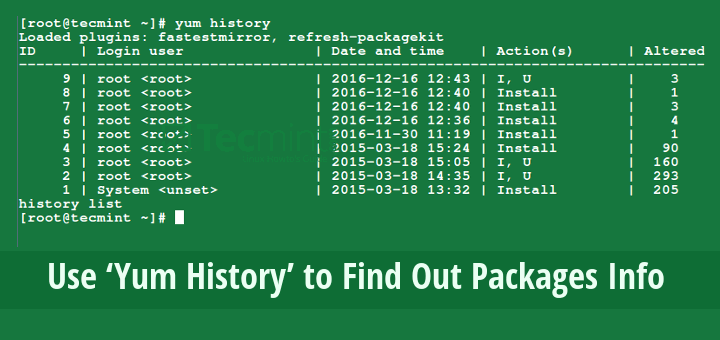

Use the command check-update to do a dry run without updating any packages. To Check the local RPM database for any problems use the “check” option. # yum groupremove "Security Tools" Checking for Update, Upgrade and Downgrade Once we know the group name we should mention the group name inside a double quote to gather info, install or remove. Printing all available groups with the respective group name. To print the “Available Environment Groups” and all available Groups.Īvailable environment groups: This is group consists of a group of packages define how the server needs to be built, it can be Web Server, Minimal installation or server with the graphical interface.Īvailable Groups:This group consists of all other groups of software like “Development Tools” or “System Administration Tools”. Yum repository enable and disable Working with Yum groups To enable anyone of repository we need to use “yum-config-manager”, In case if this command not available in your minimal installation make sure to install with “yum-utils” package. # yum erase httpd Enabling the Yum repository To remove a package from the server we can use with “remove” or “erase”.

# yum swap nc telnet -yīy running “repolist” will print only the enabled repos, to list all repository use “repolist all” this Which will print the status enabled or disabled. In some case you don’t require “nc” instead you need “telnet” this can be accomplished by using “ swap” command, this will remove the nc and install the telnet. In case we may be required to re-install any package we don’t need to remove and install. Now let us try to install two packages in a single go. # yum listĪt first, Before installing it’s a good practice to know about some information by using “info” option. List all the packages, only specific package using its name, or list all available packages. Let start with searching for anyone of the package. Using AppStream with yum in Red Hat Enterprise Linux 8 The listing, Installing and Removing Now let us start to run yum command with option and arguments to perform some installations.Īdding “ -y” with yum command will not prompt by asking “ ” during installing, removing or Updating. They are used across only (RPM) RedHat based operating system like Fedora, Red Hat, CentOS, Oracle Linux and Scientific Linux. YUM is known as “Yellowdog Updater Modified” it has several options with arguments to search, install, remove and update the packages. Yum, the command is a package manager used to manage RPM packages in Linux servers. Listing dependencies and finding features.Checking for Update, Upgrade and Downgrade.


 0 kommentar(er)
0 kommentar(er)
